
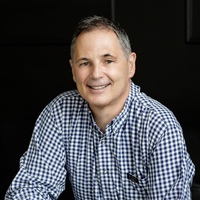
Diagnosis - Understanding Complexity
Instructions
SLIDE XX: INTRODUCTION
SLIDES XX: FOUR ESSENTIAL PRACTICES OF ADAPTIVE LEADERSHIP
There are four essential practices of adaptive leadership.
The matrix is meant to indicate that it's best to start with what’s salient to you.
The practice of leadership, like the practice of medicine, involves two core processes: diagnosis first and then action. And those two processes unfold in two dimensions: toward the organisational or social system you are operating in and toward yourself. That is, you diagnose what is happening in your organisation or community and take action to address the problems you have identified.
But to lead effectively, you also have to examine and take action toward yourself in the context of the challenge. In the midst of action, you have to be able to reflect on your own attitudes and behaviour to better calibrate your interventions into the complex dynamics of organisations and communities.
We need perspective on ourselves as well as on the systemic context in which we operate. The process of diagnosis and action begins with data collection and problem identification (the what), moves through an interpretive stage (the why) and on to potential approaches to action as a series of interventions into the organization, community, or society (the what next).
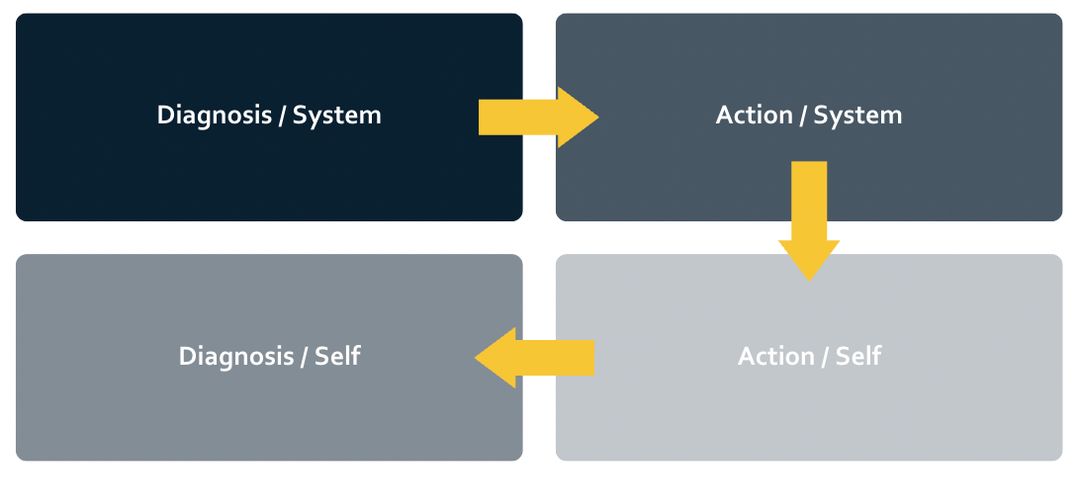
Typically, the problem-solving process is iterative, moving back and forth among data collection, interpretation, and action.
SLIDE 16: QUOTE: THE SINGLE MOST IMPORTANT….
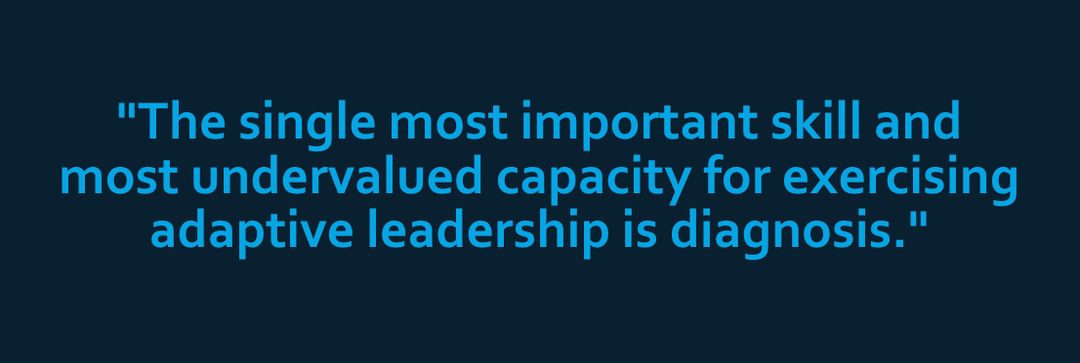
In order to ‘build the muscle’ of diagnosis, we’re going to dig in to a few critical concepts.
SLIDE 17: COMPLICATED VS COMPLEX

We are going to take a deeper dive on diagnosis.
You may remember we looked at traffic control signals and roundabouts from Brave New Work.
We struggle to understand the true challenge and continue to create organisational debt.
And the reason is that we misunderstood these two words.
We think of them as synonyms that basically frustrate us. However they're quite different if you talk to a systems theorist.
If you treat one like the other, then you'll be very disappointed in the results that you get.
Facilitator Reference: Linking from Part 1 of Brave New Work principles –
Simple Sabotage.
Operating Systems and their assumptions about people: Traffic Control Signals (control and compliance) Vs Roundabouts (trust and autonomy).
We are addicted to control which is an invalid OS which creates organisational debt.
Legacy Vs Evolutionary Organisations (which are ‘People Positive’).
Greatness Video (circle back).
SLIDE XX (WATCH AND ENGINE PHOTOS) – To understand the difference between complicated and complex systems.
Lets vote.
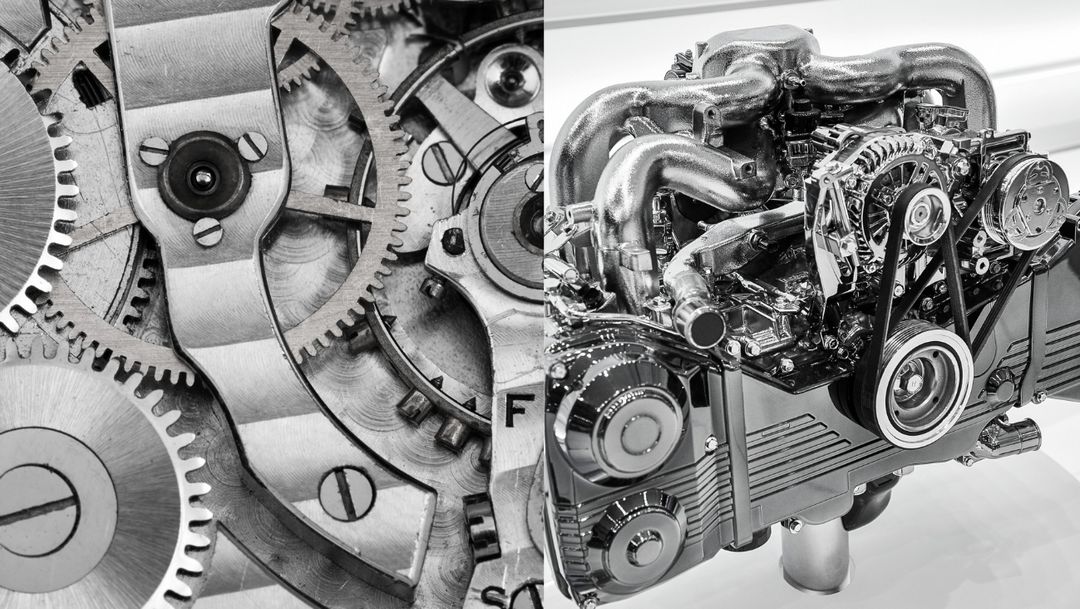
Who thinks the watch is complicated? Complex?
Most groups split the difference - one-third say either and then the other third don't vote.
Who thinks the car engine is complicated? Complex?
SLIDE XX: (WEATHER AND ROUNDABOUT PHOTOS)
Let's raise the stakes.
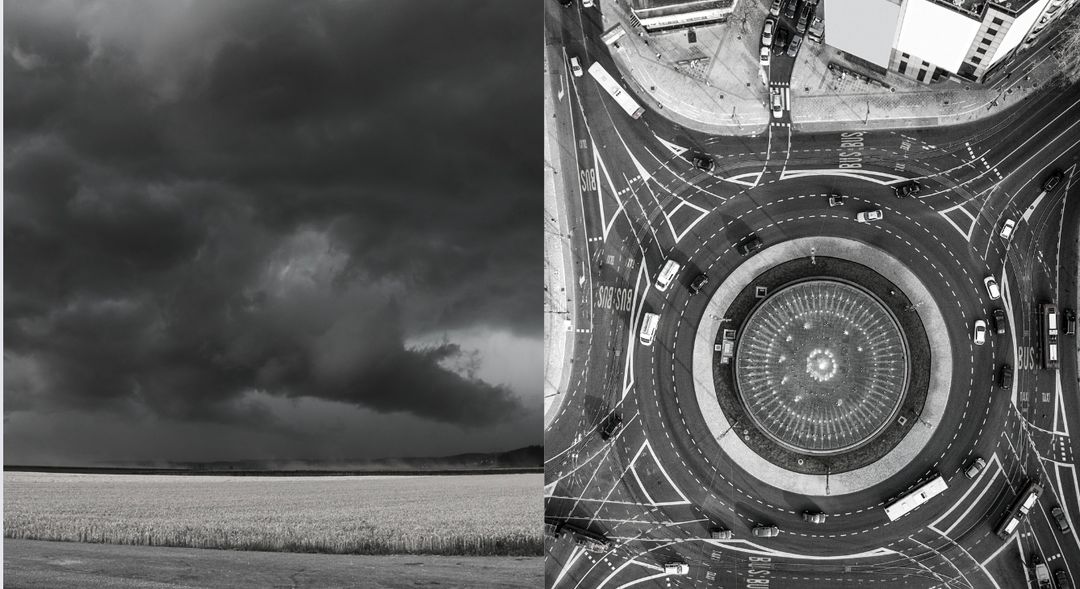
Who thinks the weather is complicated? Complex?
What about traffic? Complicated? Complex?
SLIDE XX: (WATCH AND ENGINE PHOTOS)
So lets go back to our watch and engine.

These two systems are complicated systems in the sense that they are causal. Cause and effect.
If you're a mechanic or watch maker, you can reliably fix them. They're unlikely to surprise us if we have experience in that area.
They are very likely to have problems that can be solved.
SLIDE XX: (WEATHER AND ROUNDABOUT PHOTOS)

If then turn to these two systems, these are complex systems.
They are dispositional in that they have a disposition or attitude in the way they are trending, but we have no way of knowing how they will end up.
So we might say that it looks like rain today but we have no way of knowing where and when and how much.
Similarly in traffic, there so many different individual agents that it could evolve in unexpected ways. So they are likely to surprise us.
SLIDE XX: SKYDIVERS PHOTO

What does this mean for us in organisations?
We're going to be dealing with both and we need to be able to delineate between complicated and complex challenges.
What we're doing with these systems is trying to understand them by interacting with them not trying to solve them.
Debrief: We struggle to understand the true challenge and continue to create organisational debt.
And the reason is that we misunderstood these two words.
We think of them as synonyms that basically frustrate us. However they're quite different if you talk to a systems theorist.
If you treat one like the other, then you'll be very disappointed in the results that you get. In order to understand change, we have to better understand how organisations and ‘change’ really works. Otherwise we may be influencing for the wrong outcomes.
SLIDE XX: TO MANAGE COMPLEXITY, WE NEED A DIFFERENT OPERATING SYSTEM.
Operating System is just another way for the fundamental assumptions, principles, practices and beliefs in our organisations.
SLIDE XX: PEOPLE POSITIVE AND COMPLEXITY CONSCIOUS
We need to be People Positive and Complexity Conscious.
These are the two key ideas.
People Positive - what do we believe about people?
Complexity Conscious - what do you believe about the way the world works?
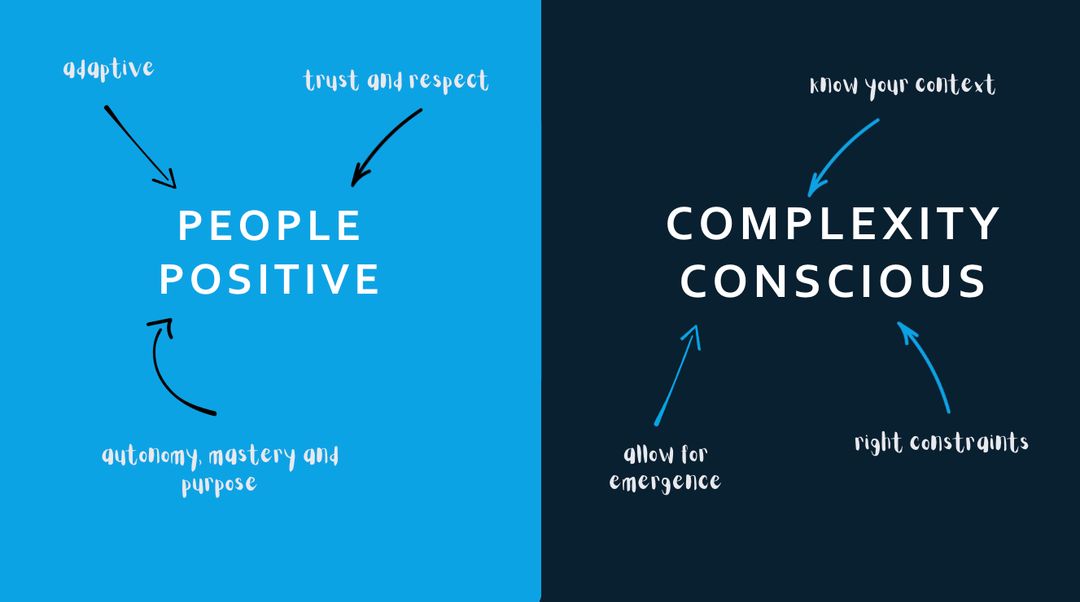
SLIDE XX: BREAKOUT ROOMS (THREES FOR 10 MINS):
What does this mean for organisations?
Thinking about your organisation, how would you assess the organisation in terms of being Complexity Conscious?
Why is your organisation like/unlike the above?
Debrief.








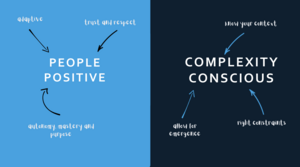
Comments (0)